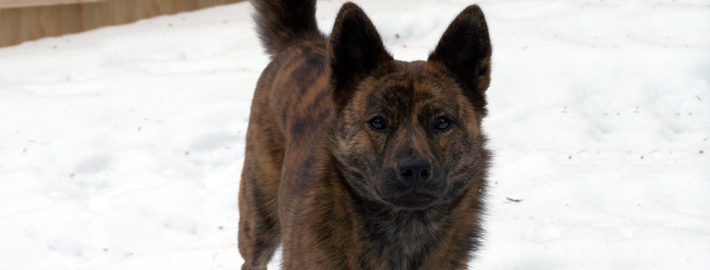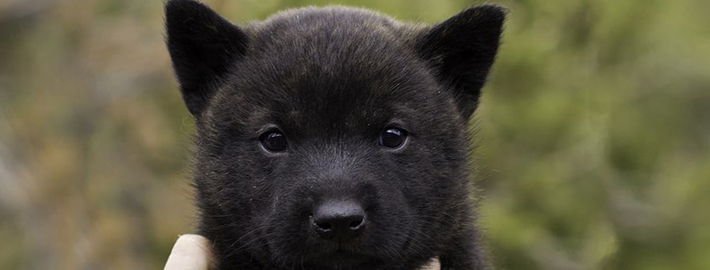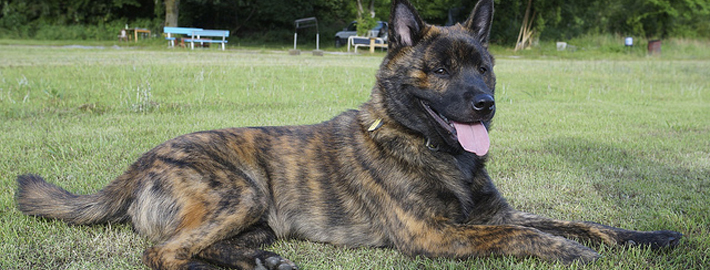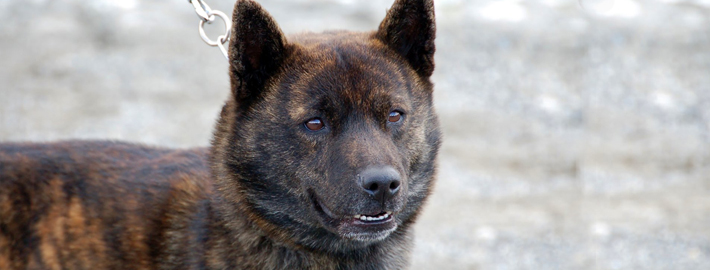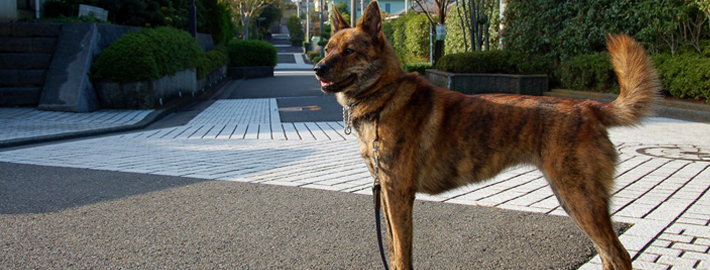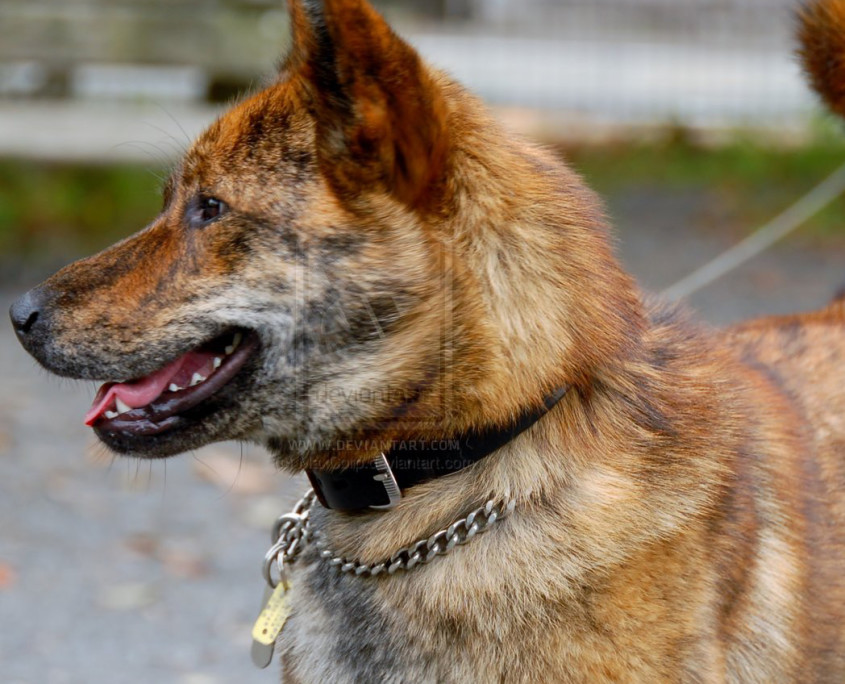What makes the Kai Ken Unique?
The Kai Ken is intelligent, agile, alert and brave. They are natural hunters and make good watch dogs, being reserved with strangers but loyal to their families. They are friendly, often good with children and are not usually aggressive towards other dogs. Many love to swim, and have been known to cross rivers and climb trees while chasing their prey.
Breed Groups
Page Contents
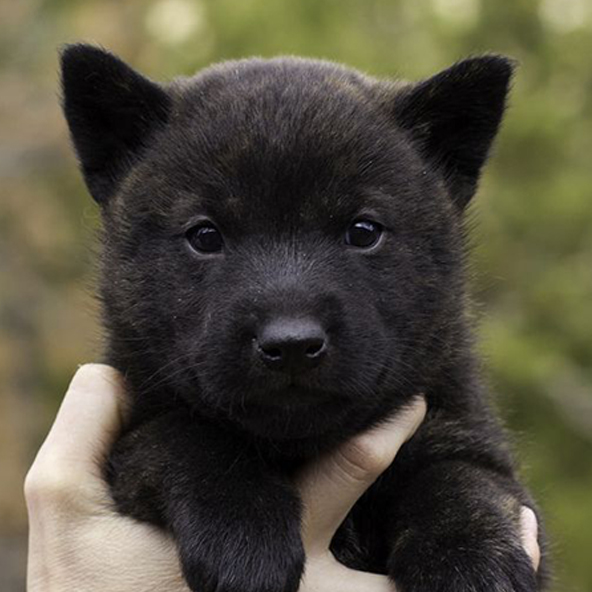
SnapShot
Is the Kai Ken Right For You?
In 5 Words
- Agile
- Alert
- Brave
- Loyal
- Intelligent
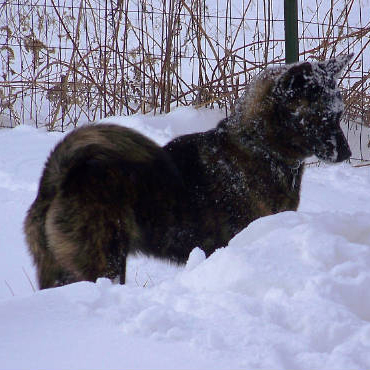
Characteristics
Learn About the Kai Ken
Description
General Description
The Kai Ken is a wonderful family pet. It is affectionate and playful with family members, showing extra care and sensitivity around children. Very intelligent, it is easy to train and generally gets along well with other dogs.
Size
The Kai Ken is a medium-sized dog with a wedge shaped head and prick ears. Males are typically 18 to 22 inches at the shoulder, while the females are slightly smaller, 17 to 20 inches at the shoulder.
Coat
The coat is of harsh texture, medium length, and comes in various shades of brindle (tiger stripes). The red is the Aka-tora, the black is the Kuro-tora and between them, the Chu-tora. Puppies are born a solid color and their brindle markings develop as they age, sometimes taking as long as five years before fully showing.
Short History of the Kai Ken
The Kai Ken originated with several other variations of his type: the Shika Inu, meaning “medium-sized dog”. Shika Inus contain several breeds of Japanese dogs, including the Kai, Kishu, and Shikoku. Other breeds similar to the Kai are the Ainu and Shiba Inu, from which this breed could have descended or been an ancestor. The Kai Ken was originally used as a wild boar or deer hunter’s assistant, called a matagi, in the province of Kai, on the island of Honshu in Japan. Matagi greatly appreciated their hunting dogs, and would speak highly of their courage and spirit. It was said that one of these Shika Inus “would not concede a step before danger.” They were once used as fisherman’s helpers, hunter’s aides, and as watch and herding dogs. All of the breeds in this category, however, have been used more often as households pets these days. In the beginning of the Kai’s days, they were thought to be too rough for a household pet, being more wild than his cousins. But the Kai has been bred down to have a more comfortable temperament, although they are still the least responsive of all the Shika Inus. Kai Kens are thought to have existed since medieval times in the Yamanashi Prefecture mountains. The breed stayed pure because of isolation over the years. In 1934, the Kai Ken was designated a National Monument, thanks in part to a breeder named Mr. Haruo Isogai. Mr. Isogai is also classified and categorized all of the Japanese breeds in the 1930s, and helped distinguish the Kai Ken from the other Shika Inus. In 1934 the breed was recognized by the Japanese Kennel Club. Some Kai Kens were imported into the U.S. in the 1950s, and spread from there. Still rare today, the Kai Ken is considered a “national treasure” in Japan.
Temperament
The Kai Ken is a wonderful family pet. It is affectionate and playful with family members, showing extra care and sensitivity around children. Very intelligent, it is easy to train and generally gets along well with other dogs.
Caring for Your Kai Ken
Grooming & Bathing
They should be brushed weekly to keep their fur mat free and clean. Bathe them as necessary, depending on how dirty they are. Their ears should be checked routinely for wax build up, infection or dirt. Their nails should also be trimmed regularly. Kai Kens shed once or twice a year, making grooming at these times needed. Kai Kens should be trained from puppyhood, as they are very willful.
Exercise & Training
Kai Kens need regular exercise on a leash, taking walks or runs. They can also be given a job to do such as herding to satisfy their exercise.

